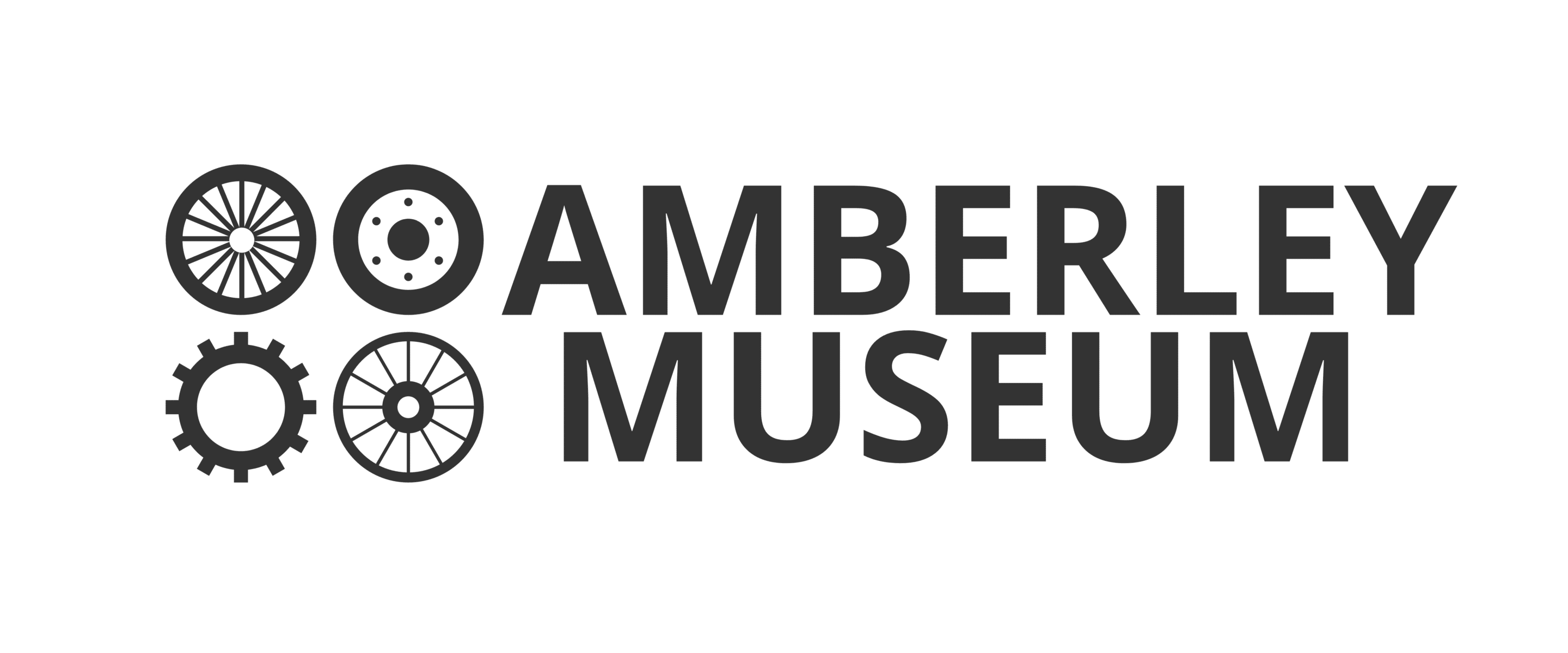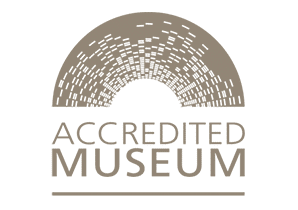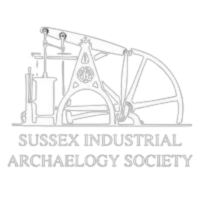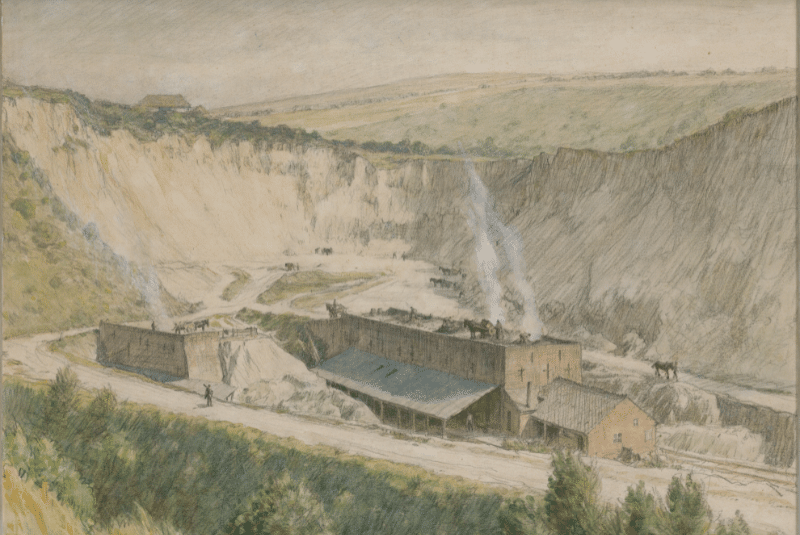
What did the museum site look like 100 years ago, when it was a working chalk pit and lime works owned and operated by Pepper & Son Ltd?
A watercolour in the museum’s collection gives a compelling view of the lime works and the work carried out here exactly a century ago.
In summer 1925 Hubert Williams (1905-1989) visited Amberley as a 20-year-old young artist. Exploring the countryside around Amberley one summer evening he was struck by the sight of the De Witt Lime Kilns glowing at night.
“I saw this peaceful scene at night … with the outline of the Downs and the glowing rings of dull red … showing the tops of the burning kilns.” Hubert Williams
Viewed from High Titten – the lane which runs along the edge of the chalk pits – ‘Lime burning at Amberley’, captures a bird’s eye view of the top end of the site. In the centre are the De Witt Kilns and beyond rise the chalk faces of the Grey Pit.
Chalk pit labourers are hard at work collecting the freshly blasted chalk from the Grey Pit, before transporting it by horse and cart to the De Witt Lime Kilns.
“Although it was an industrial scene, it was a very peaceful one. I think the slow pace was really set by the horses. They were quiet, continuous, and they gave it a sort of rhythm.” Hubert Williams
The De Witt Kilns
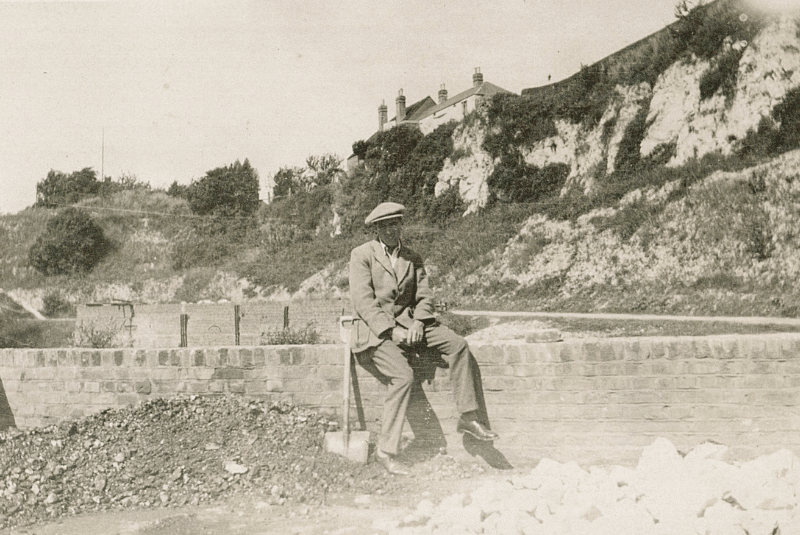
On the roof of De Witt Kilns, Lime Burners are shown manning the burning lime kilns, keeping them topped up with layers of chalk and coal, ensuring they were burning correctly, so good quality lime was produced.
In the watercolour at least two of the four De Witt Kilns are lit.
“Sometimes there was a popping sound and a smell of acrid burning, even from that distance. Even the blasting [of chalk] by gelignite seemed muffled.” Hubert Williams
Lime burners worked in pairs. One would man the top of the kiln, loading it with layers of chalk and coal, while the other collected more chalk from the Grey Pit by horse and cart.
At the lower-level lime burners removed the burnt lime from the draw holes of the kilns. In this area, the lime was bagged up and weighed before being transported off site by steam locomotive.
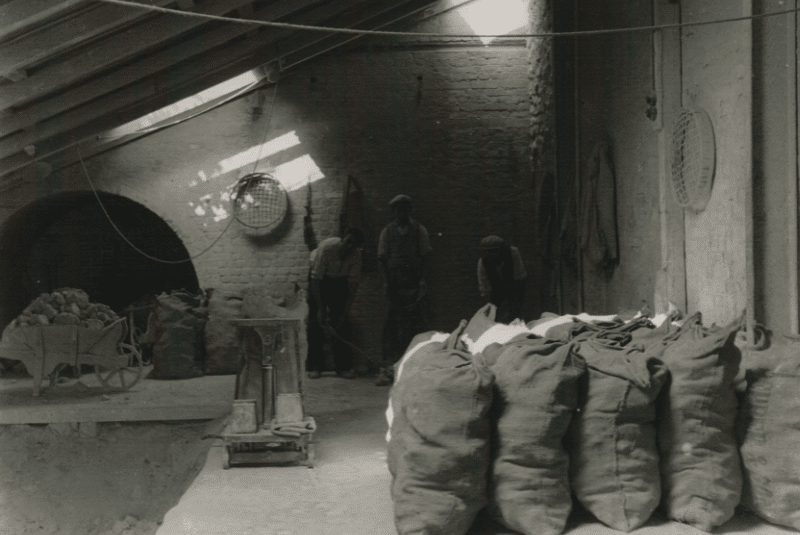
Each side of the De Witt Kilns was roofed to prevent the lime, being removed from the kilns and loaded into rail wagons, from getting damp.
Railway sidings ran along either side of the kilns, enabling lime to be transported directly to customers. The industrial railway line can be seen in the lower right-hand corner of the watercolour.
Manual Labour
The industrial scene captured is one of manual labour, prior to the introduction of mechanization from the late 1930s onwards. At the time, most of the work was carried out using basic hand tools.
Horses and carts were used at the lime works from 1870s until just after World War Two, when they were replaced by dumper trucks. In 1925 work was still by hand, with chalk shoveled into carts.
Photographs from the early 1900s even show workers scaling the chalk faces to retrieve pieces of blasted chalk the correct size for burning in the kilns.
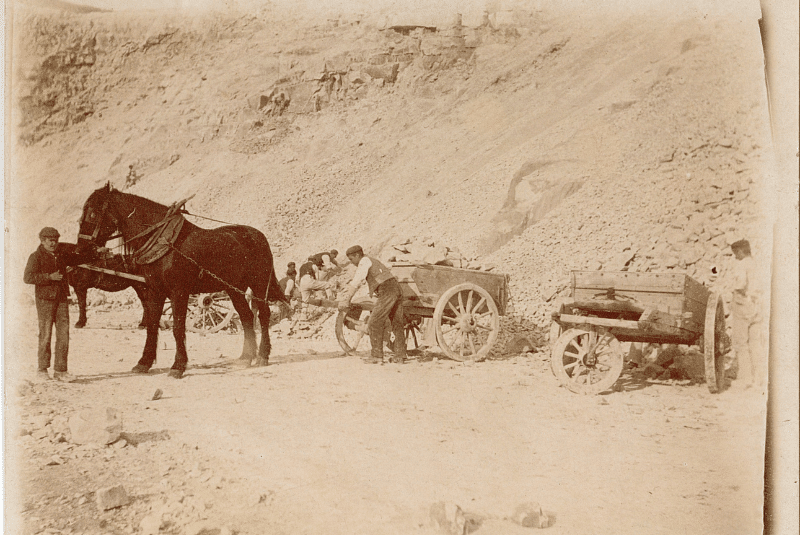
Quarrying on an industrial scale
Hubert Williams’ picture also shows how large and deep the Grey Pit was in 1925.
Quarrying and lime burning started on an industrial scale at Amberley Chalk Pits and Lime Works in 1870. By 1925, 55 years of quarrying had created a large chalk pit in the heart of the South Downs.
The height of the chalk cliffs in the picture, with the rolling hills of the South Downs in the background, reveals how much chalk had been quarried from the site by 1925.
Quarrying and lime burning would continue here for another 40 years, until the site closed in 1968.
